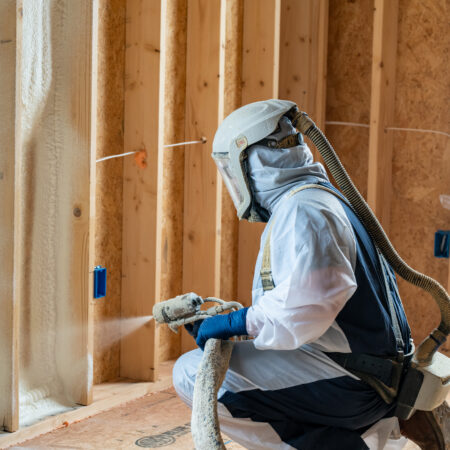Sustainable Foam to Meet Code
HFO-Based Spray Foam Insulation: The Sustainable Future of the Building Industry

The building industry is in the midst of a significant shift in insulation practices, particularly in light of changing building codes, increased emphasis on energy efficiency, and growing focus on sustainable building practices. The spotlight is now on hydrofluoroolefin, or HFO-based spray foam as the sought-after alternative to the rapidly phased-out hydrofluorocarbon (HFC) products.
HFCs, widely used in foam insulation, are recognized air pollutants and significant contributors to global warming. According to the U.S. Environmental Protection Agency (EPA), HFCs have a climate impact that can be hundreds-to-thousands of times greater than carbon dioxide (CO2). According to a 2010 EPA report, HFCs used in building foams (insulation) accounted for 38 million metric tons of CO2 equivalent1. To put that in perspective, according to Penn State’s Institute of Energy and the Environment, 38 million metric tons is “equivalent to the total carbon dioxide emitted by more than 8.2 million average gasoline passenger cars driving 11,500 miles per year.”2 In an effort to reduce this volume and risk, states are actively pushing for the building industry to transition away from HFC-based products, emphasizing the need for eco-friendly insulation solutions that don’t compromise on performance.
The Science Behind HFOs
While HFO-based spray foam might look similar to its HFC counterpart, the two are quite different, both in their chemical properties, and most importantly, in their environmental impact. Both start as liquids that turn into gas to make the foam we see in insulation. The big difference is how they act once they’re out in the air. HFOs break down quickly in the atmosphere, 2000 times faster than HFCs that, conversely have an atmospheric lifespan of 15 years.3
HFOs and Building Standards
The International Energy Conservation Code (IECC) set a new benchmark in 2021 for the R-value requirements in building insulation, reflecting a more stringent standard for energy conservation. Closed-cell spray foam insulation, known for its high R-values, stands out for its ability to effectively fill gaps, cracks, and crevices, acting as both an air and vapor barrier and insulation. With HFO-based blowing agents, these products achieve even higher R-values—about 10% more than HFC-based foams.
For builders, the enhanced R-value of HFOs is an advantage. The IECC now mandates an additional 5% energy savings in projects. This can be achieved through enhanced insulation, efficient HVAC systems, reduced energy in water-heating, improved duct thermal distribution, or superior air sealing. The high R-values and inherent air barrier qualities of HFO-based spray foam align perfectly with these new standards, ensuring optimal temperature control, improved indoor air quality, noise reduction, and energy savings.
Efficiency On and Off the Jobsite
HFO-based spray foam offers more than just environmental benefits. Its high thermal resistance directly translates to efficiency during the application process. Traditional spray foams, given the heat they generate during application, often require extended wait times between passes. HFO-based foams, however, allow for thicker applications with reduced downtime, ensuring a streamlined project timeline. Also, the superior R-values mean that desired insulation levels can be achieved with less material, resulting in cost savings.
Additionally, HFO-based products have proven consistent in sprayability, guaranteeing efficient and predictable application across varying climates. Such consistency becomes even more critical when considering current industry challenges like worker shortages.
A Look Ahead
The evolution from HFC to HFO-based spray foam insulation marks a significant step toward sustainable building practices. Using innovative HFO products not only caters to the increasingly stringent environmental standards but also ensures consistent, high-quality application and performance. By championing the use of HFO-based spray foam, the building industry is not just constructing energy-efficient edifices but is also paving the path for a sustainable and eco-friendly future.
Why choose SealTiteTM Pro?
Our SealTite Pro family of spray foam insulation products is thoroughly tested for consistent performance and backed by the most accurate technical data available. SealTite Pro is available for purchase, either directly or through our extensive network of national distribution partners.